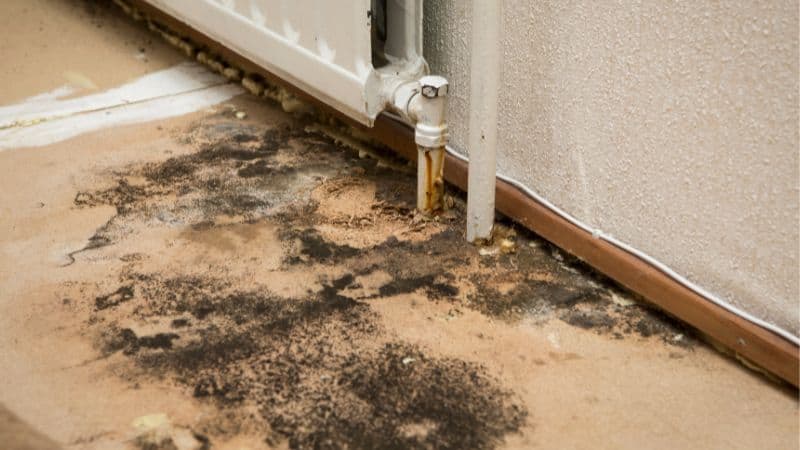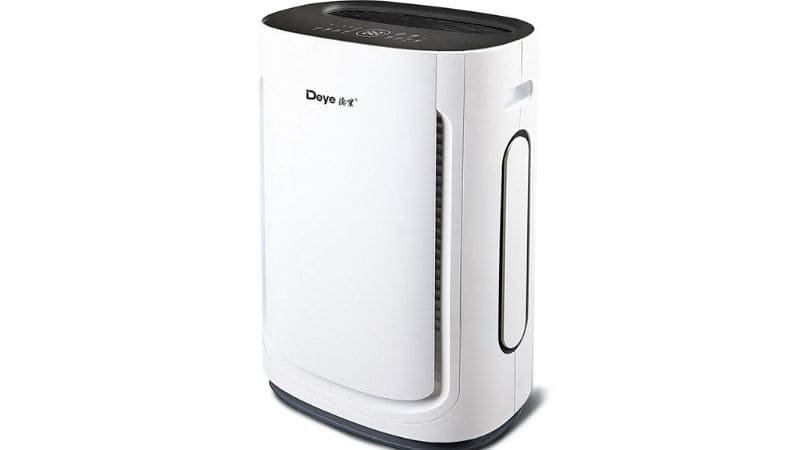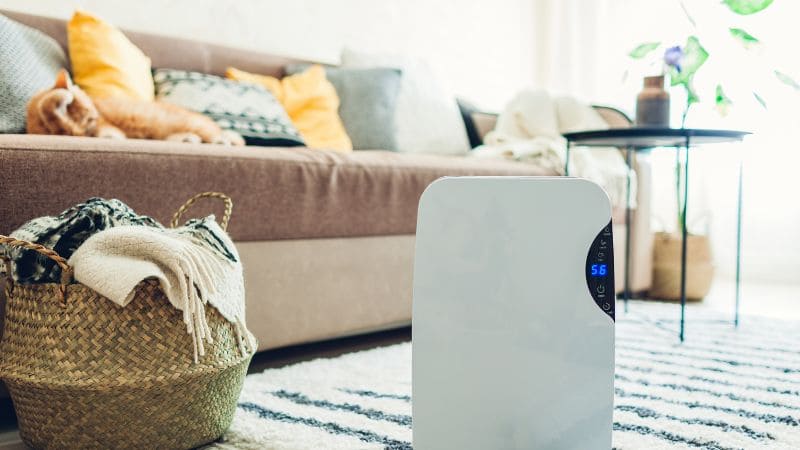
High humidity is one of the important causes of mold growth. If you’re in a high-humidity environment, you’ll find mold everywhere, especially in kitchens, bathrooms, and basements. The fight against mold is not easy. To reduce or even eliminate mold, it is very important to control humidity at a proper level. So, what humidity is suitable for mold growth?
The article includes clear instructions on mold and mold growth. Some measures help you to prevent mold from your home.
What is Mold?
Mold is a type of fungus that can be found both indoors and outdoors in various colors. It plays a vital role in nature by breaking down dead organic material. However, in your home, it’s something you want to manage.
What Humidity Does Mold Grow?
The relative humidity of 55% or over is a comfortable environment for mold to grow. To prevent mold growth in your home, you need to keep the humidity between 30% and 50%, ideally around 35%-45%, but not too low. Humidity below 30% is too dry and can make you feel sick. You can use a hygrometer to monitor the relative humidity level in your house.
Common Residential Areas for Mold
- Basements: Often characterized by higher humidity levels, basements can harbor mold growth especially if they lack proper insulation and ventilation.
- Bathrooms: Frequent use of water without adequate exhaust fans leads to increased moisture and condensation, making bathrooms a common mold hotspot.
- Kitchens: Cooking, washing dishes, and refrigerator drip pans can contribute to increased humidity and might foster mold on walls and other surfaces.
- Attics: Poor ventilation, along with roof leaks, can lead to mold growth on insulation, ceiling tiles, and the wooden structure.
- Carpet and Drywall: These materials can absorb moisture, providing an ideal environment for mold when they become wet from leaks or floods.
Reasons For High Humidity
Poor ventilation: If air isn’t being circulated and refreshed properly, humidity can build up, especially in areas like bathrooms and kitchens where a lot of moisture is generated.
Everyday activities: Things like showering, cooking, boiling water, and drying laundry inside all release moisture into the air and increase humidity if the house isn’t well-ventilated.
Seasonal and regional climate: Hot, muggy weather and generally humid regions like coastal areas will make indoor humidity worse if the house isn’t sealed well from the outside air.
Insufficient thermal envelope: If a house has a lot of air leaks and gaps in its outer structure, humid air from outside can easily enter and raise indoor humidity. Older houses are especially prone to this.
Inadequate HVAC system: If the air conditioning isn’t powerful enough to remove excess moisture or is oversized and short-cycles, it won’t be able to keep humidity under control.
Sources of dampness: Things like leaky roofs, rising dampness, and wet building materials after renovations can all contribute moisture to the indoor air if not dried out properly.
Conditions For Mold Growth
In an indoor environment, high humidity is the most important reason but not the only factor for increasing mold. Do regular inspections and prevent damage from mold.

Moisture: Moisture is the most critical factor for mold growth. Mold requires “considerable moisture” to grow, which is often caused by water intrusion, condensation, or high humidity levels above 60-70% indoors.
Food Source: Mold feeds on organic matter, and many common building materials like drywall, wood, paper, and textiles contain ideal nutrients for mold. Using mold-resistant materials and keeping surfaces clean helps limit potential food sources.
Suitable Temperature: Temperature and humidity are both important. Most molds grow well between 60-80°F, which is the typical temperature range for human comfort indoors.
Mold Spores: Microscopic mold spores are always present in both indoor and outdoor air. When spores land on a surface with sufficient moisture and nutrients, mold begins to grow
How to Prevent the Growth of Mold in Your Home?
Controlling humidity in your home is essential for comfort and health. Below are targeted strategies you can implement to effectively manage moisture levels.
Improve Air Circulation
To reduce humidity, enhance the ventilation in your home. Open windows and doors to allow fresh air to circulate. Use exhaust fans in high-moisture areas like bathrooms and kitchens during and after activities like cooking and bathing. In rooms without fans, portable fans can help increase air circulation and distribute air evenly throughout the space.
Bathroom: Use an exhaust fan during and for at least 15 minutes after hot showers.
Kitchen: Turn on the range hood fan while cooking, especially when boiling water or steaming food.
Use Professional Devices
Both dehumidifiers and air conditioners can play a pivotal role in lowering the humidity levels in your home. A dehumidifier works to remove moisture directly from the air, while an AC unit cools the air and, as a side effect, removes moisture. Consider a whole-house dehumidifier if you live in a very humid climate, or use portable dehumidifiers in particularly damp areas.
Dehumidifier Settings: Aim for humidity levels between 30-50% for optimal comfort.
Air Conditioners: Regular maintenance of your AC can ensure it’s effectively removing humidity.
Optimize Household Routines
Your daily activities contribute to indoor humidity levels. To reduce humidity, adjust how and when you perform household tasks.
Laundry: Hang wet clothes on a clothesline outside instead of indoors, or ensure your dryer is vented outside.
Dishes: Avoid using hot water wash cycles in your dishwasher when possible, and crack the door open after the rinse cycle to allow steam to escape.
Cooking: Limit the use of boiling water and opt for covered pots to contain steam.
By employing these methods, you’ll create a more comfortable and healthier living environment by maintaining appropriate humidity levels in your home.





